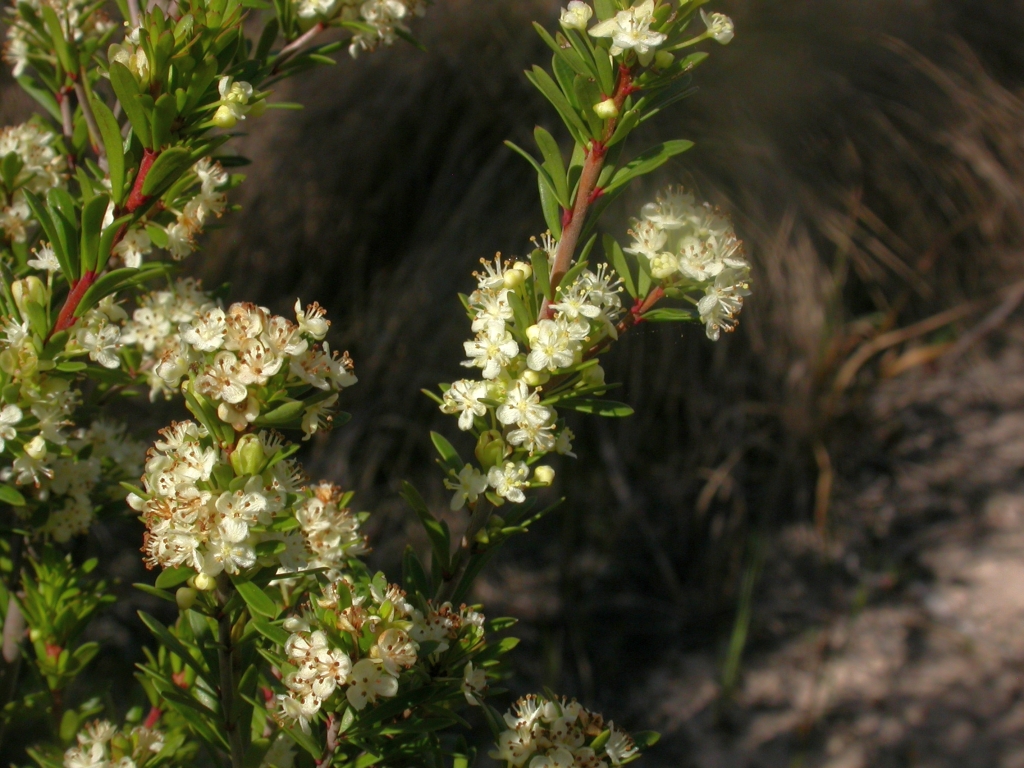Micrantheum hexandrum
Hook.f. Box MicrantheumErect shrub to c. 2 m high, more or less glabrous; branches sometimes pubescent. Leaves oblong or narrow-oblanceolate to oblanceolate, mostly 8–20 mm long, 2–4 mm wide, apex acute or obtuse, mucronate, margins flat, glabrous; petiole c. 1 mm long. Male flowers on peduncles c. 8 mm long; female flowers subsessile but peduncles elongating to c. 5 mm in fruit. Male sepals ovate, 1–3 mm long; stamens 6 or 9; female sepals lanceolate-ovate 3–5 mm long; styles persistent. Capsule ovoid to globose, 6–7 mm long, c. 6 mm wide, with 3 divergent lobes at apex; seeds usually 3, obloid, c. 4 mm long, reddish-brown. Flowers mostly Oct.–Feb.
VRiv, MuF, GipP, CVU, NIS, EGL, EGU, HSF, HNF, VAlp. Also Qld, NSW, ACT, Tas. Scattered through the eastern highlands and ascending to subalpine areas where often found on rocky terrain and in riparian situations (usually larger-leaved in the latter habitats).
Jeanes, J.A. (1999). Euphorbiaceae. In: Walsh, N.G.; Entwisle, T.J., Flora of Victoria Vol. 4, Cornaceae to Asteraceae, pp. 55–82. Inkata Press, Melbourne.
 Spinning
Spinning
